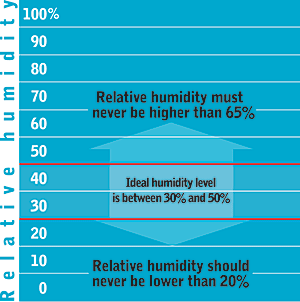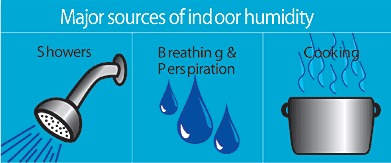The Art and Science of Good Ventilation
 |
Water intrusion problems leading to mold buildup often are a result of faulty building envelope design and construction that permits water to enter the wall from inside or outside and trap it so the inside of the wall can't dry out. Crawl spaces also are common sources of moisture buildup. More new homes than ever today are gabled, and intersecting rooflines can be another problem area if errors are made in roofing or flashing installation.
"Moisture-and resultant mold problems-are the subject of more current research than any other area of construction," says a spokesperson for a U.S. ventilation manufacturer. "Ventilation won't overcome the problems of bad design, but ventilation, coupled with good design, will create a very good indoor environment."
The House is a "System"
The modern home is an interactive system. The envelope design, infiltration/exfiltration and HAC system must be appropriate for the climate to support effective ventilation. Assuming that they are, the house will have these things in common: people and their activities are the major source of indoor humidity: showers are the greatest contributor; breathing and perspiration, second; and cooking, third.
Showers and cooking always produce high concentrations of moisture for a short time in predictable spots, and are best controlled by intermittent "spot" ventilation.
Breathing and perspiration, in contrast, take place throughout the house and are best controlled by general continuous ventilation.
 |
Keeping these two quite different strategies in mind makes control of excess moisture more logical.
If high moisture concentrations produced by the shower or cooking are not controlled at the source, they are dumped into the whole house. That causes excess moisture and makes it difficult if not impossible to provide good indoor air quality.
The key is to ensure that homeowners will use what has been installed. The quieter the fans are, for instance, the more often they will be used. It is important to remember that the simpler the design, the more likely it is to be effective. For spot ventilation, some type of automatic control would be beneficial.
Today's exhaust fans are quieter and more energy efficient. Some manufacturers now offer a variety of Energy Star-qualified ventilation fans designed for use not only in bathrooms and kitchens, but also in dens, utility rooms, offices, conference rooms and recreation rooms. Recently developed models use 65 percent less energy than standard models and may qualify for local utility rebates. Energy Star-qualified models now incorporate high-efficiency centrifugal blowers that provide virtually silent performance.
Newer models have myriad light options − including incandescent or fluorescent and night lights, may be recessed to match overhead lighting and some incorporate heaters. The style and operation of these new models encourage their installation in laundry rooms, media rooms, exercise rooms, basements, craft rooms, workshops, hallways and closets.
"Even the best designed home indoor air quality system is of no value if it is not used," says a manufacturer's spokesperson. "Humidity sensing fans are the best solution we have to that problem."









